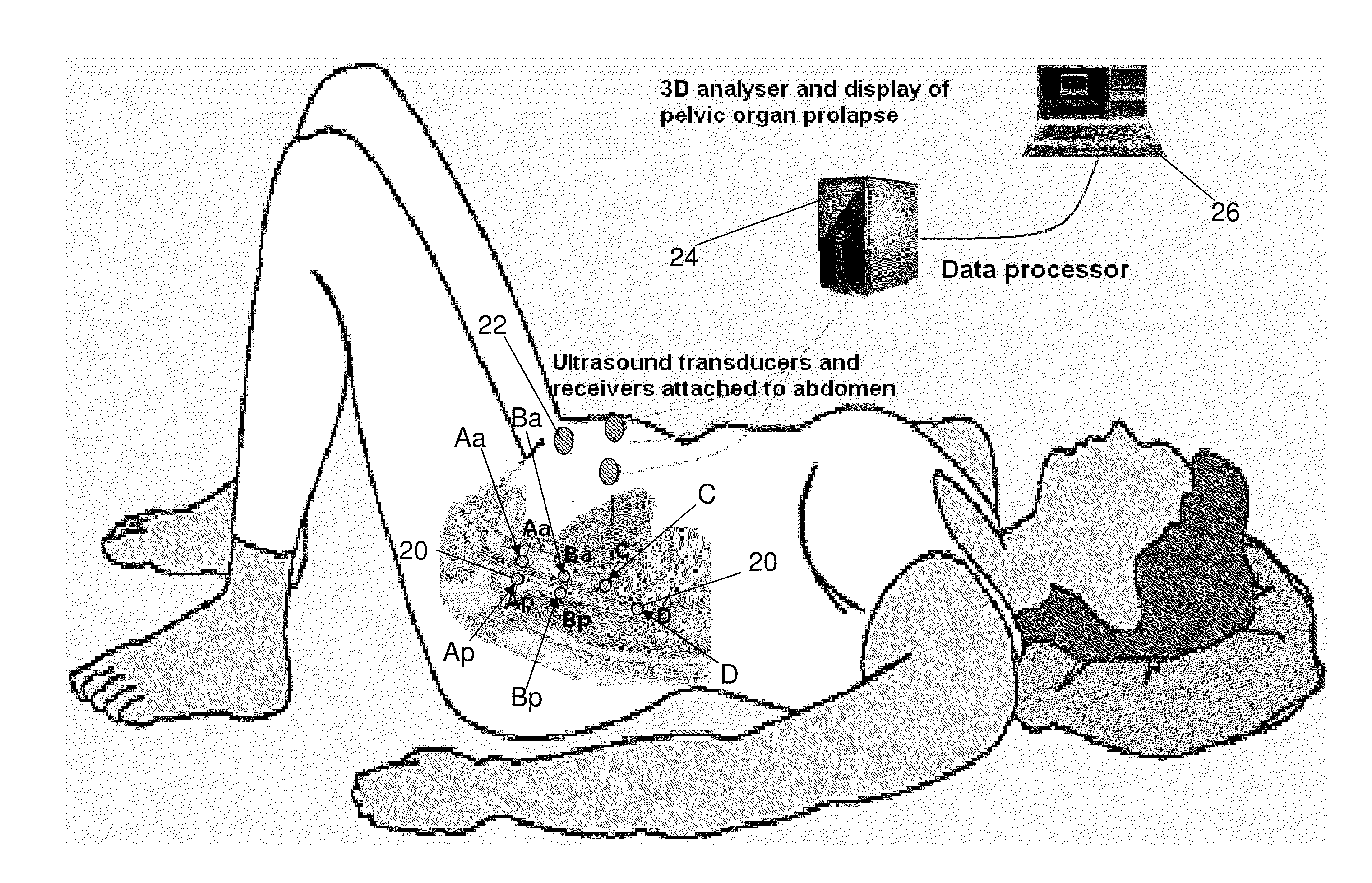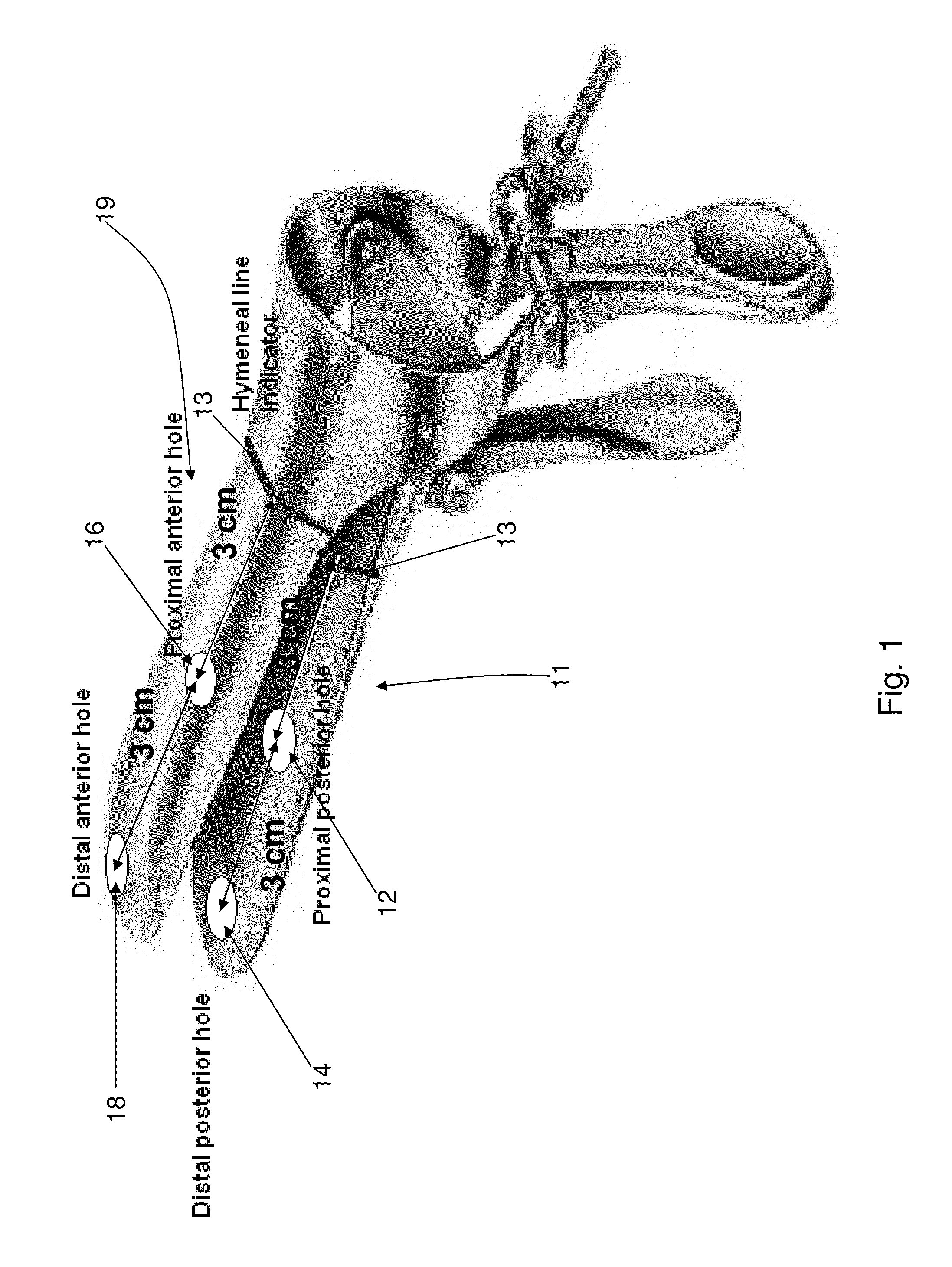Electronic pelvic organ prolapse quantification system
a pelvic organ and electronic technology, applied in the field of pelvic organ prolapse measurement devices and methods, can solve the problems of insufficient accuracy, site-specific systems for describing, quantifying, and staging pelvic support in women, and difficulty in measuring performan
- Summary
- Abstract
- Description
- Claims
- Application Information
AI Technical Summary
Benefits of technology
Problems solved by technology
Method used
Image
Examples
Embodiment Construction
[0026]As detailed above, there is a need for an electronic system as described herein, which is capable of accurately and site-specifically describing, quantifying, and staging pelvic support in women in order to provide a standardized means for documenting, comparing, and communicating clinical findings with proven interobserver and intraobserver reliability.
[0027]Furthermore, embodiment methods, devices and systems enable the clinician to assess pelvic support defects in a variety of positions, including standing and sitting. Also, various embodiments enable the clinician to have an evaluation tool for long term follow-up after any reconstructive surgery. This post-operative evaluation can precisely identify and compare the failure rate of different types of procedures with proven interobserver and intraobserver reliability. This opens a wide area of research in order to find the best possible reconstructive surgery and hence to provide the best possible care for women.
[0028]The f...
PUM
 Login to View More
Login to View More Abstract
Description
Claims
Application Information
 Login to View More
Login to View More - R&D
- Intellectual Property
- Life Sciences
- Materials
- Tech Scout
- Unparalleled Data Quality
- Higher Quality Content
- 60% Fewer Hallucinations
Browse by: Latest US Patents, China's latest patents, Technical Efficacy Thesaurus, Application Domain, Technology Topic, Popular Technical Reports.
© 2025 PatSnap. All rights reserved.Legal|Privacy policy|Modern Slavery Act Transparency Statement|Sitemap|About US| Contact US: help@patsnap.com



